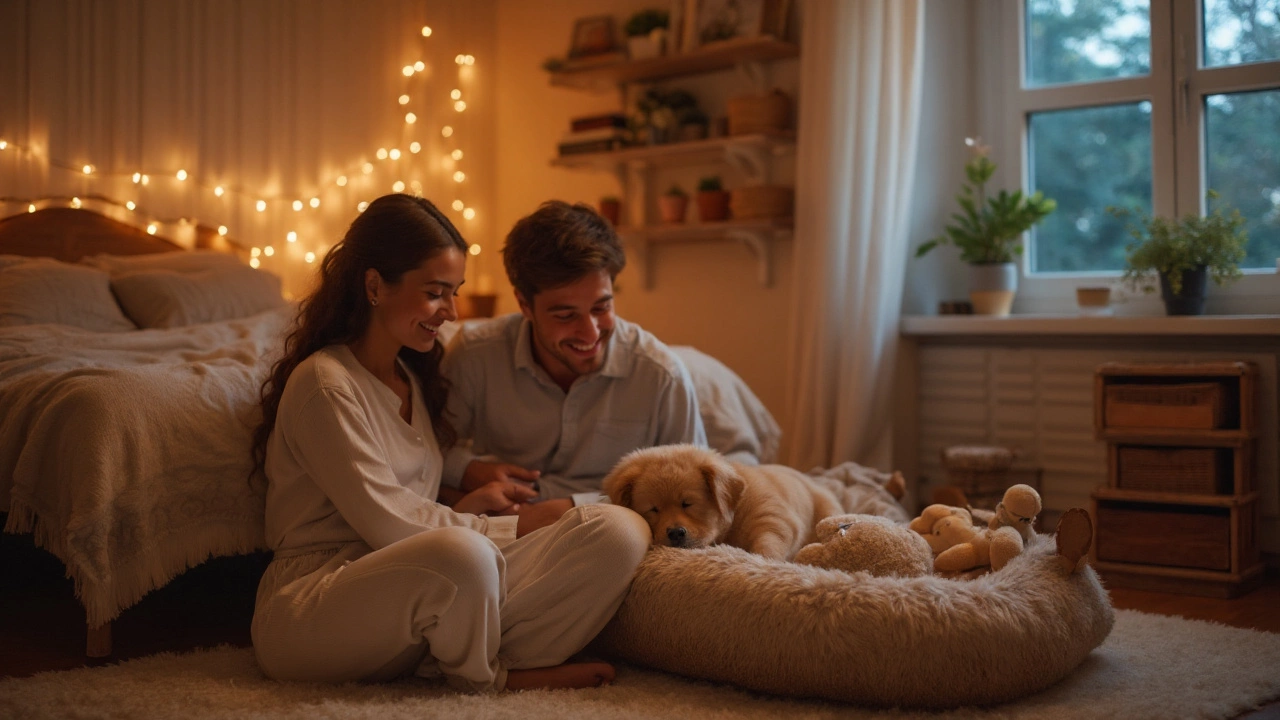Sleeping with Puppy: How to Make Nighttime Cozy and Safe
Sharing a bed with a new pup can feel sweet, but it also brings a few challenges. Your puppy needs warmth, security, and a place that won’t hurt them if they tumble. Below you’ll find simple steps to keep both of you happy when the lights go out.
Creating a Safe Sleep Space
First, think about where your puppy will actually lie. A small, washable dog bed inside your own bedding works best. It gives them a familiar scent and prevents them from rolling into the cold floor. If you let them curl up on your mattress, place a thin blanket or a pet‑specific pad underneath to cushion any accidental kicks.
Make sure the area is free of loose cords, small toys, or anything they could chew on while they’re half‑asleep. Puppies love to gnaw, and a stray shoelace can become a choking hazard. Keep the room temperature around 68‑72°F; too hot can cause overheating, and too cold will make them restless.
Crate training can also help. Some owners keep the crate in the bedroom and open the door at night. This gives the pup the feeling of being close while still providing a secure enclosure. If you choose this route, ensure the crate is large enough for the puppy to stretch out and that it has a soft blanket inside.
Nighttime Routine for a Happy Puppy
A predictable routine signals to your puppy that bedtime is coming. A quick bathroom break, a short cuddle, and a calm voice saying “good night” can work wonders. Try to keep the lights dim and avoid loud noises right before sleep – sudden sounds can startle them and break the calm.
When you first start co‑sleeping, expect a few interruptions. Puppies may whine or shift around as they get used to the new environment. Resist the urge to get up immediately; give them a minute to settle. If the whining continues, a gentle hand on their back or a soft “shhh” often does the trick.
Watch for signs of discomfort. If your pup is panting heavily, sweating around the paws, or seems unusually agitated, they might be too warm or need a bathroom break. A quick check can prevent a full‑blown night‑time accident.
Finally, think about feeding. Feeding too close to bedtime can cause a full stomach and increase the chance of needing a late‑night bathroom run. Aim to finish dinner at least an hour before you both go to sleep.
By setting up a safe spot, keeping the room comfortable, and establishing a calm routine, you’ll turn those first nights of co‑sleeping into a bonding experience instead of a stress test. Your puppy will learn to associate bedtime with warmth and security, and you’ll get a good night’s rest too.
Posted By Bryndle Redding On 4 Aug 2025 Comments (0)
Should You Let Your Puppy Sleep in Your Bedroom? Puppy Sleep Training for New Dog Owners
New to puppy parenting? Find out if sharing your room with a puppy helps with sleep, bonding, anxiety, and training. Real tips for new owners in New Zealand.
READ MORE